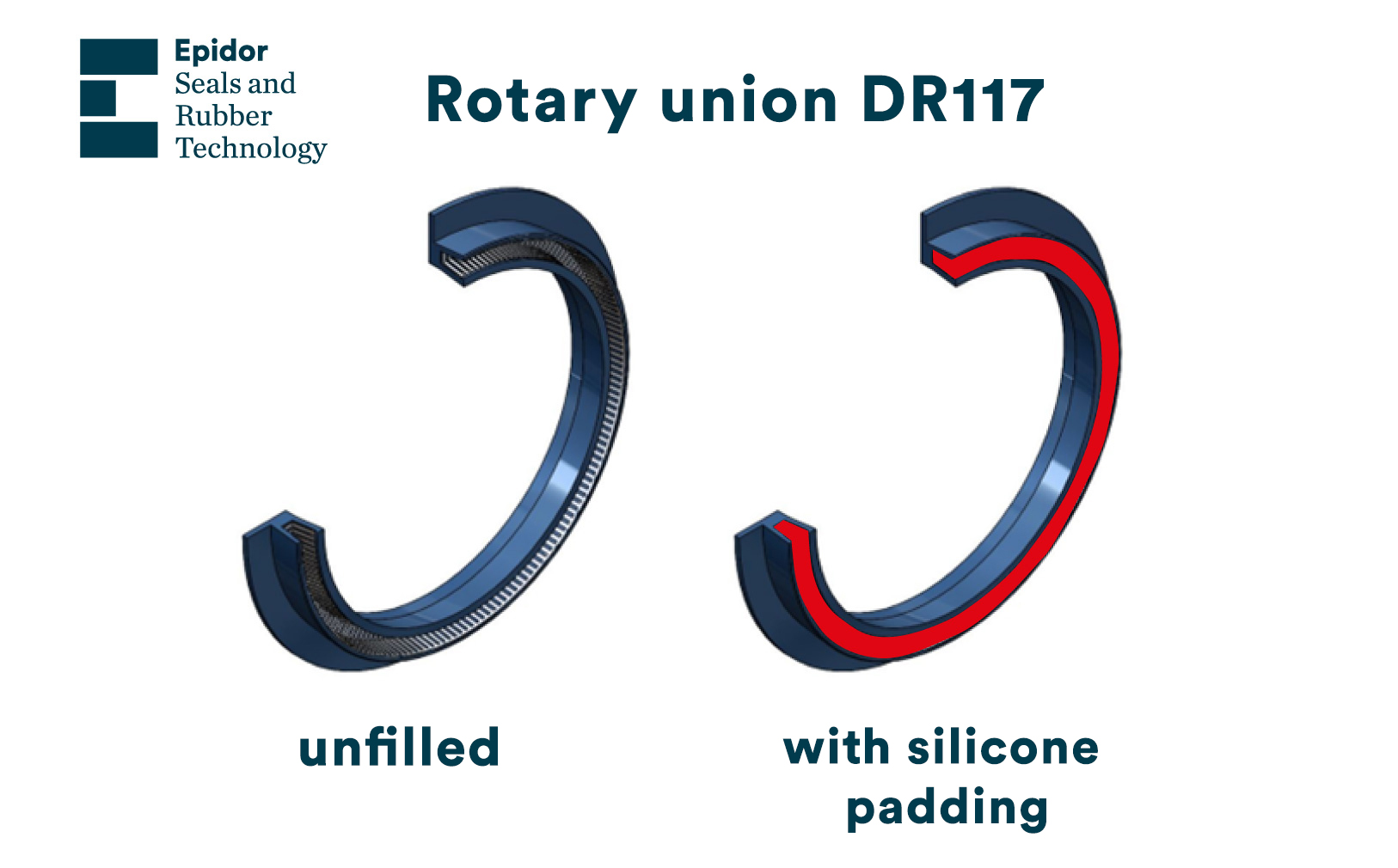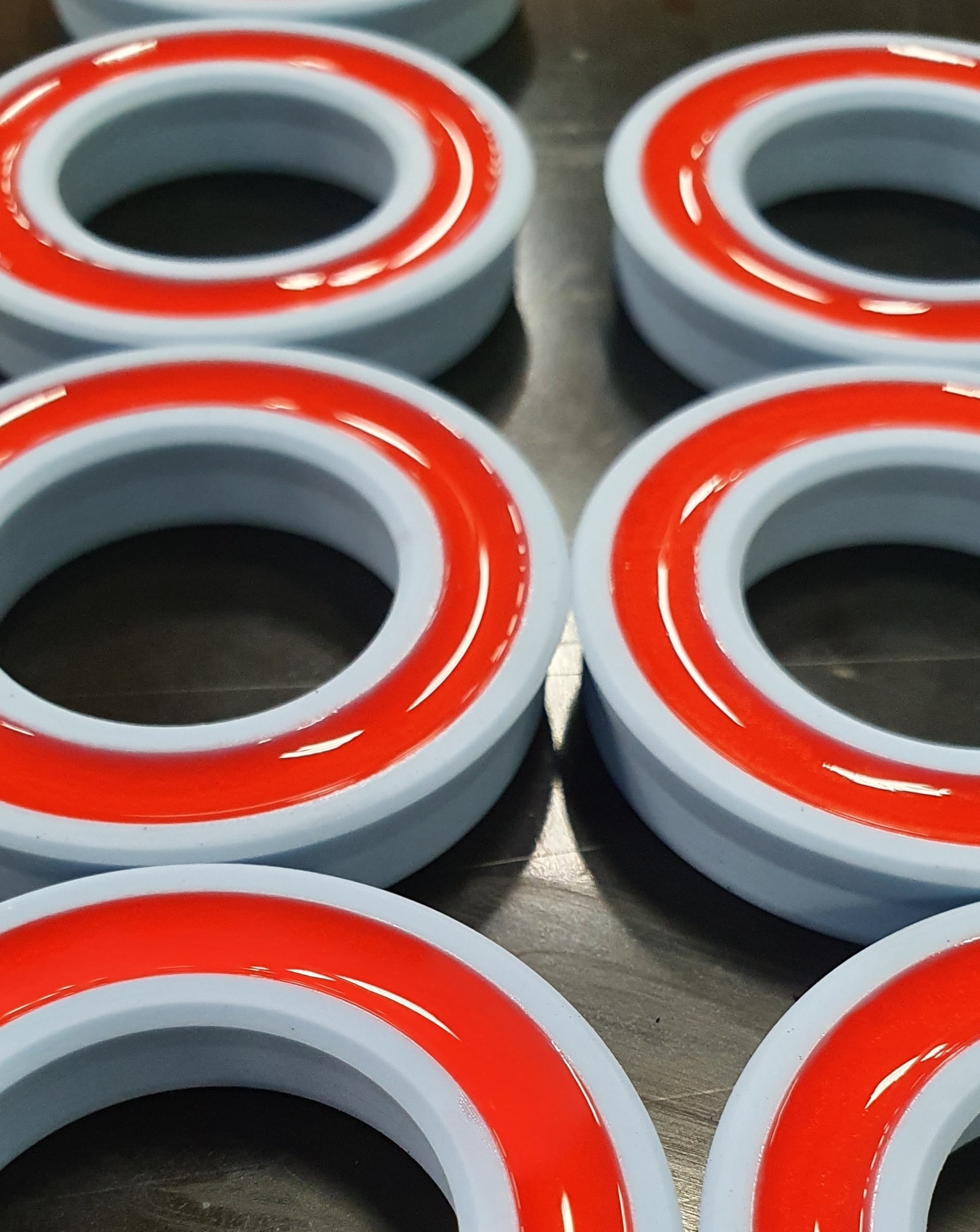
Silicone-filled seals
To tell you about silicone-filled seals, we will make an introduction to the complexity of sealing fluids.
In the food, pharmaceutical and fine chemical industries among others, the management of their fluids, in itself, is not easy.
And it gets more complicated when the fluids have a certain viscosity or contain particles in suspension. We refer to sludge, syrups, slurries, lyes, molasses and food fluids, among others.
On this occasion, we are going to see how these fluids condition the design of the dynamic sealing seals to be installed in the rotary equipment involved in their handling: pumps, mixers, valves, dispensers, rotavapors, agitators, reactors, etc.
We also talk about why silicone-filled seals turn out to be a very good solution.
 It is a clean design, without dead zones and suitable for CIP cleaning, as long as the good chemical resistance of the silicone against the chemicals that are going to be used is checked.
But it is also that the silicone filling is used in collars made from silicone!
If the fluid allows it, the use of these collars has two immediate advantages:
It is a clean design, without dead zones and suitable for CIP cleaning, as long as the good chemical resistance of the silicone against the chemicals that are going to be used is checked.
But it is also that the silicone filling is used in collars made from silicone!
If the fluid allows it, the use of these collars has two immediate advantages:
 And the silicone filling prevents -following the example- that remains of the crushed tomato accumulate between the lips of the collar, rot and damage the juice that is being manufactured. Collar without dead volume between lips.
And the silicone filling prevents -following the example- that remains of the crushed tomato accumulate between the lips of the collar, rot and damage the juice that is being manufactured. Collar without dead volume between lips.
- • Difficulties in the tightness inherent to the type of fluids
- • Energized silicone-filled seals: a suitable solution
Índice
Difficulties in the tightness inherent to the type of fluids
A pharmaceutical laboratory or a tomato juice plant, to cite two examples, may have in common that the nature of some of their process fluids is determined by their chemical aggressiveness and, consequently, the seals chosen for the dynamic sealing of the equipment. They must be made of materials resistant to chemical attack. The ones that offer the best results are filled PTFE formulations, ultra-high molecular weight polyethylene (UHMW-PE) and even polyetheretherketone (PEEK). On the other hand, both filled PTFE, UHMW-PE or PEEK collars require a spring to keep the sealing lips separated from each other, since these materials do not have elastic memory. The fact of adding the spring is what we know as “energizing the seal”. At this point, we are clear that to avoid leaks in our equipment, we are going to need an energized lip seal, based on a formulation with sufficient chemical resistance. The problem arises: what can happen to our seal if the fluid is loaded with grit or if it brings with it remains of the crushed tomato? What most likely happens is that the fluid or foreign bodies affect the proper functioning of the spring, blocking its spirals, and thus reducing the tension it exerts. Then, the lip of the seal loses the force that keeps it in position and gives way due to the existing interference with the shaft. The bottom line is that the probability of the seal suddenly leaking is very high. We can also find that the spring is a niche for bacteriological growth, which is a situation to avoid in food and pharmaceutical applications.Energized silicone-filled seals: a suitable solution
The solution to this problem is to inject silicone that fills the cavity and covers all the gaps between the spring and the lips of the seal, thus creating energized seals filled with silicone. In this way, said filler will prevent foreign bodies that the process fluid may contain from affecting the tension of the seal lips. The following image corresponds to a rotary seal DR 117 style energized by a “U” spring and with an immobilization tab. And the same piece is silicone filled.- • Seals without spring;
- • Groove design without the restrictions in terms of cross-section and height part imposed by the spring.